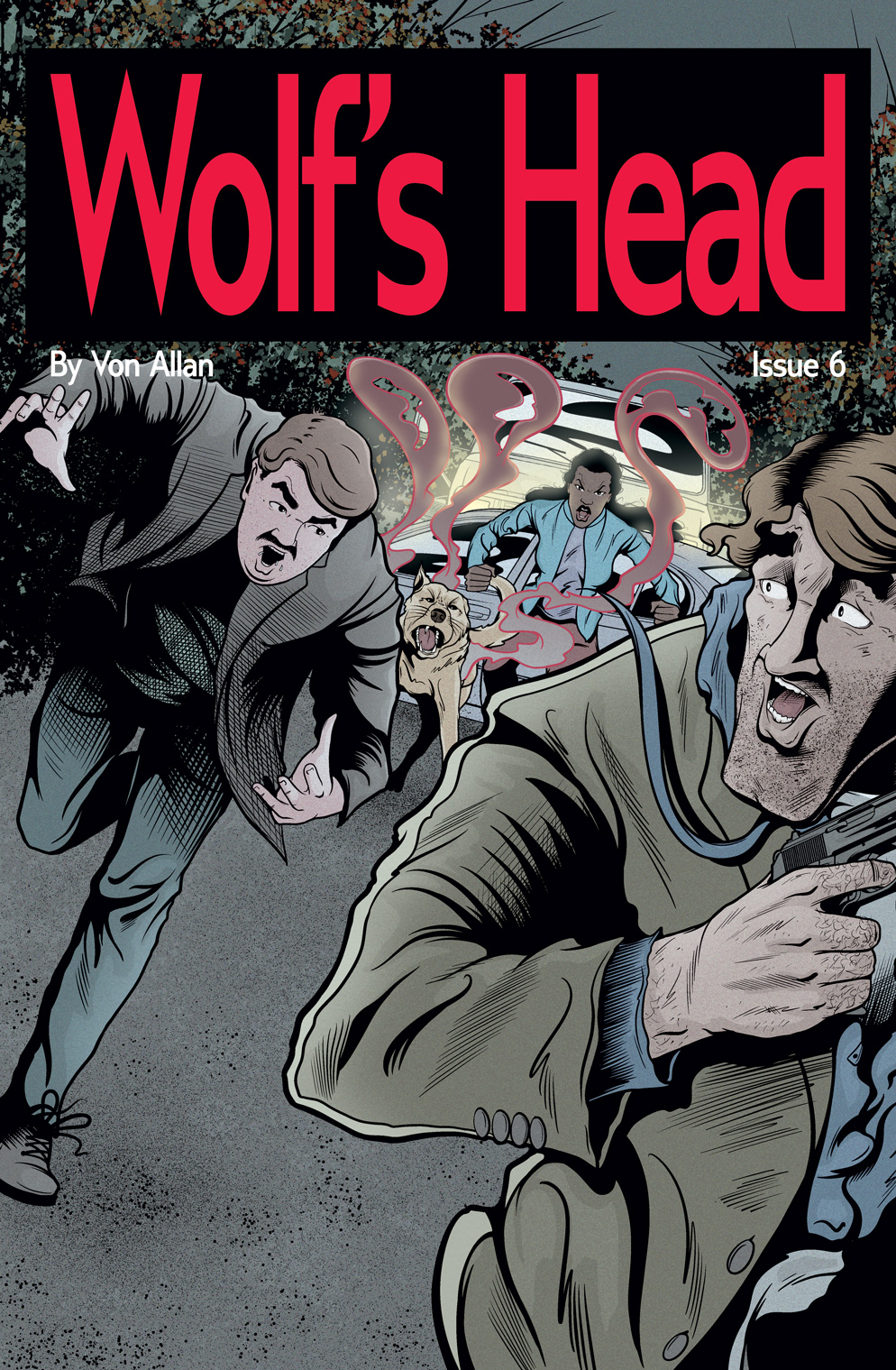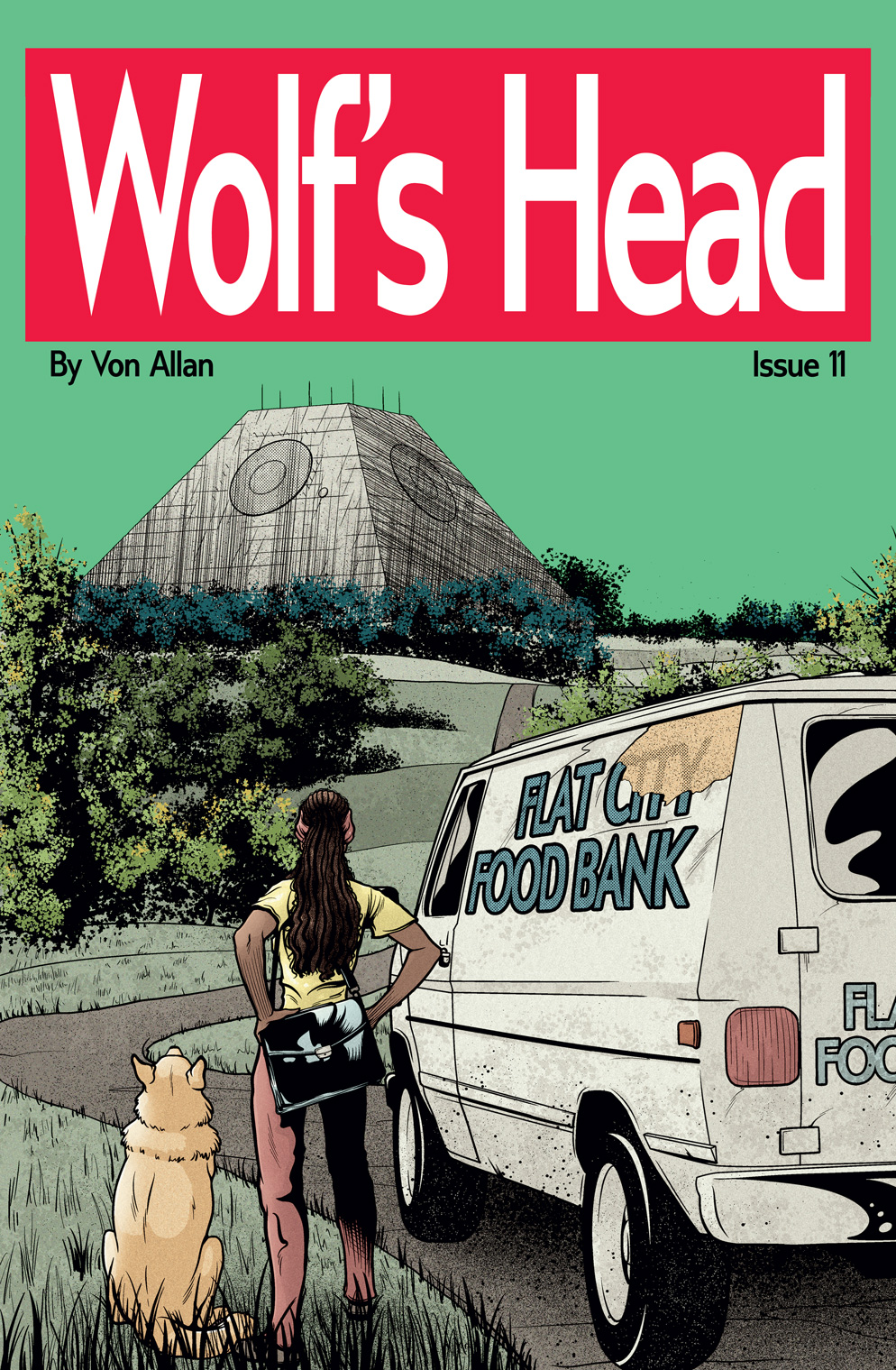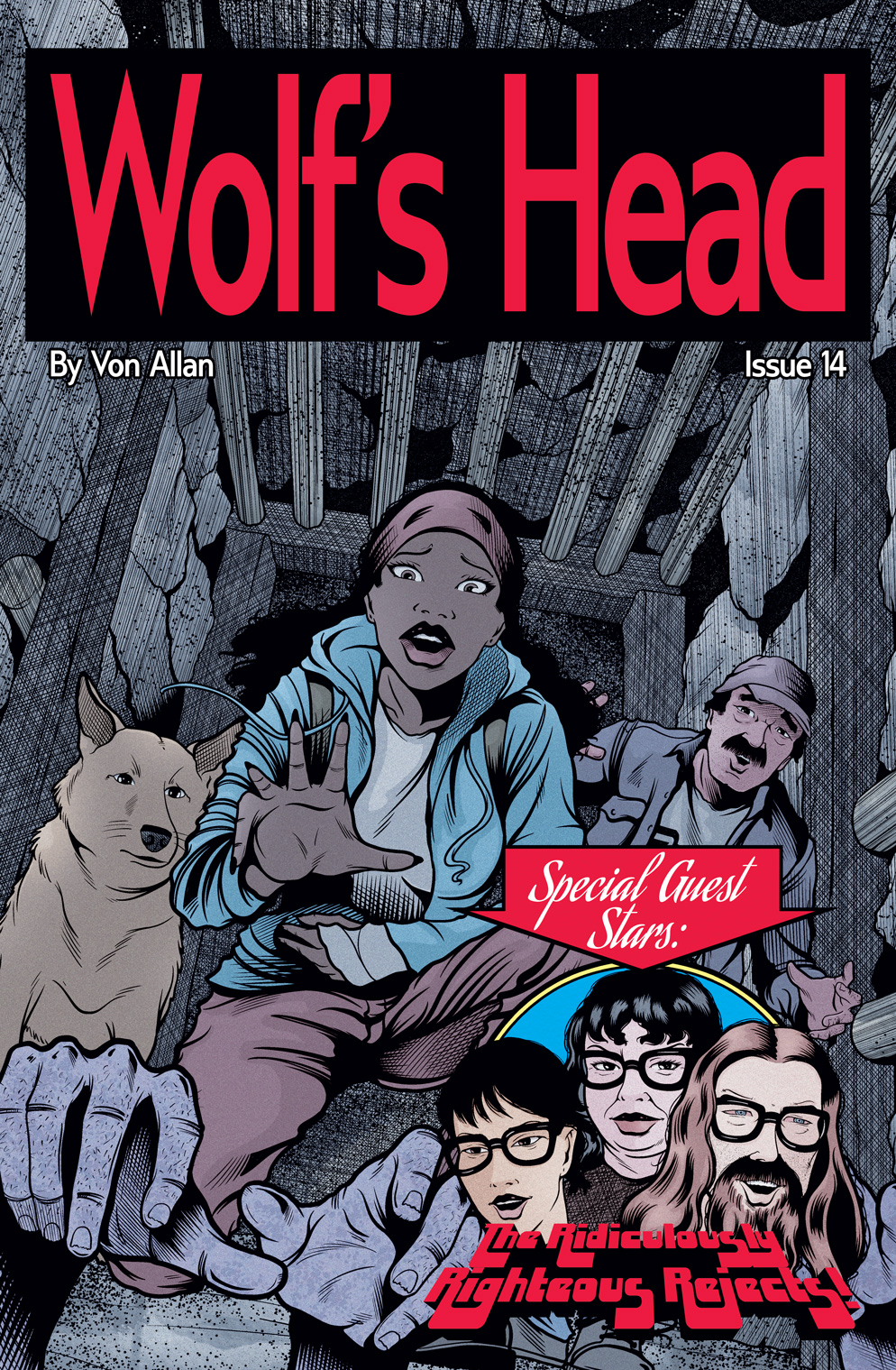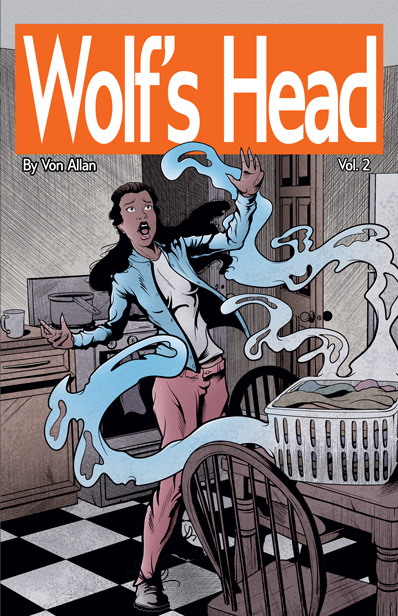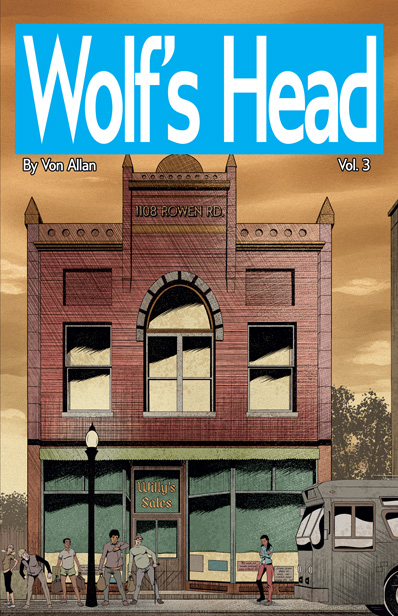Read WOLF'S HEAD issue 16 of the comic book series for free on the Internet Archive
Elevator Pitch
“An increasingly desperate Lauren Greene has realized that the young artificial intelligence she’s befriended is in mortal danger from the powerful corporation that created it and wants it back. On the run again, Lauren must outsmart corporate agents on her tail, keep herself and her dog alive, and teach the reluctant AI to defend itself… or risk losing everything!”EMOTION!
This is one of the more emotional stories I’ve done with WOLF’S HEAD. And given what’s happened in the series so far, that’s saying something! Lauren is continuing her road trip south from Alaska into Alberta, but is dogged every step of the way by a “tail” that she just can’t shake. That creates a great deal of pressure… and that pressure eventually blows in a way that hopefully will catch readers by surprise!Creating a series like this is very rewarding, but also difficult, especially from the point of view of “getting the word out to people who’ve never heard of it!” So, if you’ve been enjoying WOLF’S HEAD, please tell your friends and family about it. The best link to use for sharing is this one; everything is all in one place. And if you’ve somehow stumbled across the series, then please give it a try. I’ve worked very hard to make sure that each and every issue is “new” reader friendly. There isn’t any one particular “jumping on” point; they all are! At the same time, a deeper and larger story is being told. Where Lauren was at the start of the first issue is a very different place than where she is now. That’s part of the fun of comics! And part of the fun of WOLF’S HEAD!
Key Links
Here are all of the key links:- Internet Archive link for WOLF’S HEAD Issue 16: https://archive.org/details/wolfs-head-016-by-von-allan
- WOLF’S HEAD Volume 8 (collecting Issues 15 and 16 of the series): https://wolfs-head.vonallan.com/p/wolfs-head-volume-8.html
- Shop Page: https://wolfs-head.vonallan.com/p/shop.html
- Wolf’s Head Official Site: https://wolfs-head.vonallan.com/
WOLF’S HEAD Volume 8 Trade Paperback Graphic Novel
For those who would like to purchase a print copy, issue 15 and issue 16 are collected together in a 60 page trade paperback graphic novel. So while you can always read the series for free, print-lovers are well-represented, too! You can learn more about the graphic novel at https://wolfs-head.vonallan.com/p/wolfs-head-volume-8.html.Multiple Ways to Read the Series
Digital Comics
You can read every issue of WOLF'S HEAD for free on the wonderful Internet Archive. You can click on any of the covers below to find that issue on the Internet Archive.
Trade Paperback Graphic Novels
What if you want to hold these comics in your hand? Easy! Trade paperbacks have been published in nine volumes so far. Each volume collects two issues of the digital series and are 60 pages in length. Most volumes also have sketches, background material, editorials, letters, and whatnot, too! These affordable paperbacks are available worldwide.
Most online retailers regularly stock and carry WOLF'S HEAD. However, occassionaly there are hiccups with this from time to time (typically because the retailer has had a little rush on sales!). So, if you were shopping on Amazon (for example) and discovered that a particular volume is out of stock, there are many alternatives. These include Barnes & Noble, Bookshop.org, Indigo, McNally Robinson, The American Book Center, Waterstones, and so on. In addition to these links, all of the ISBNs for the trade paperbacks and the hardcover are also below, so you can always use that when you are chatting with your local bookseller or comic book shop.








